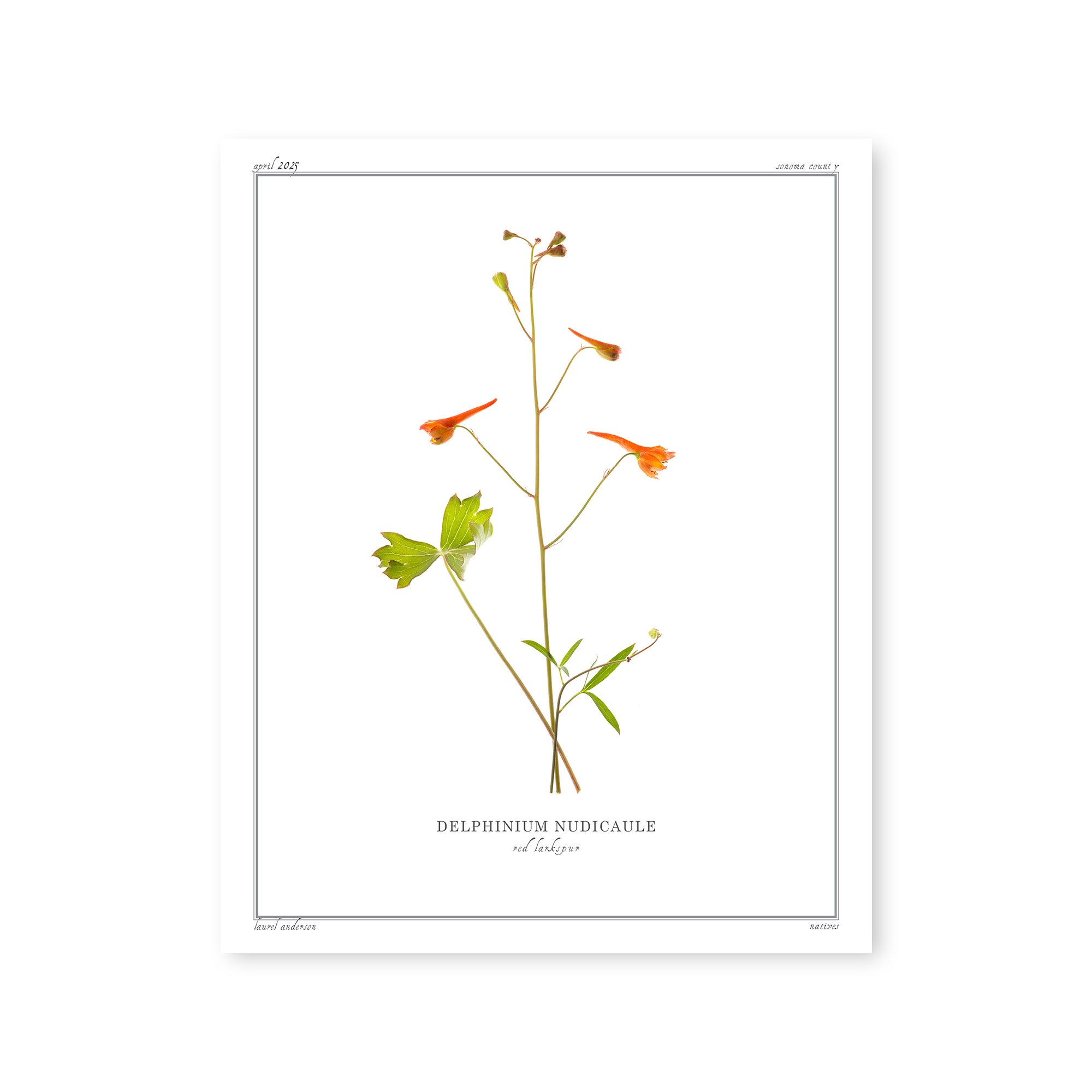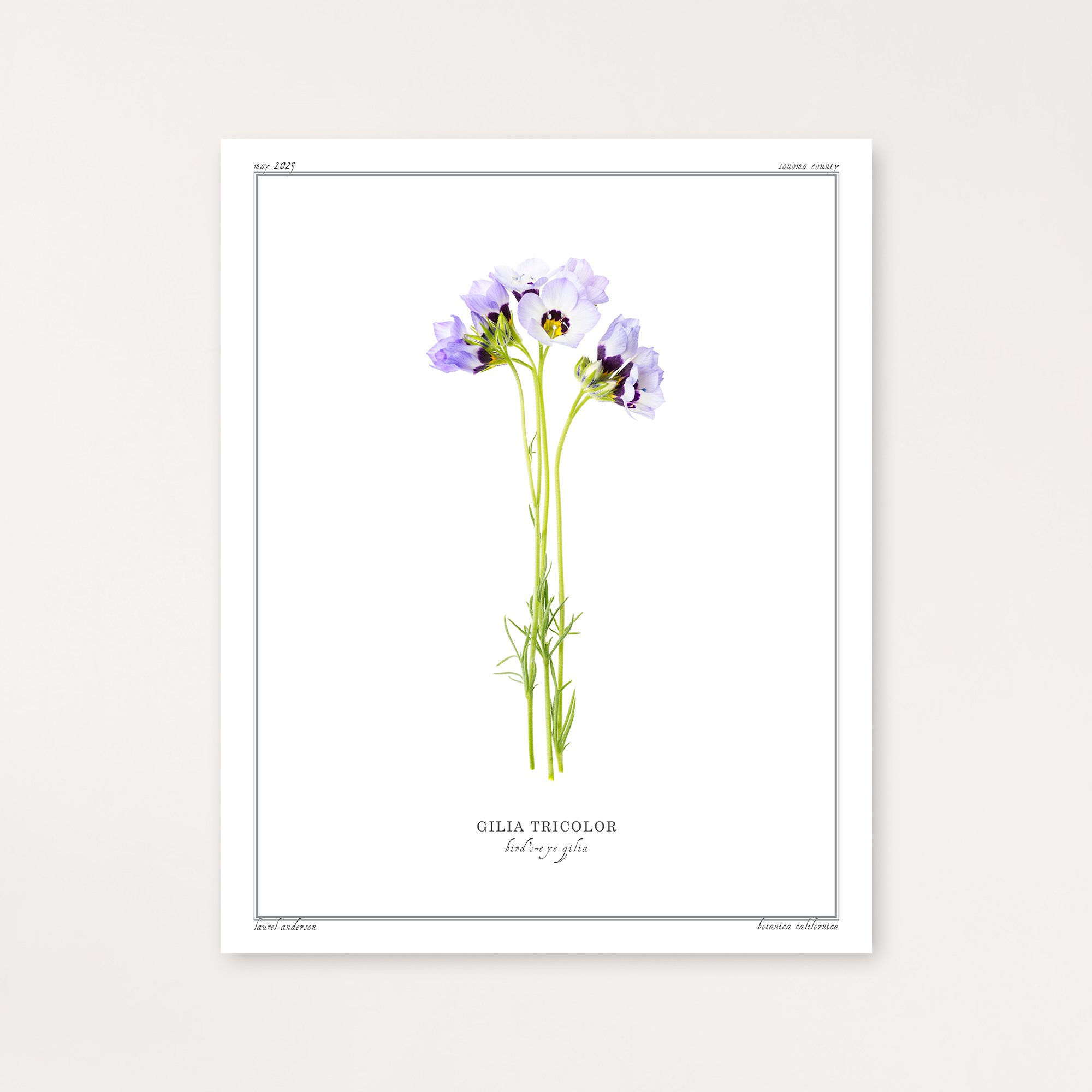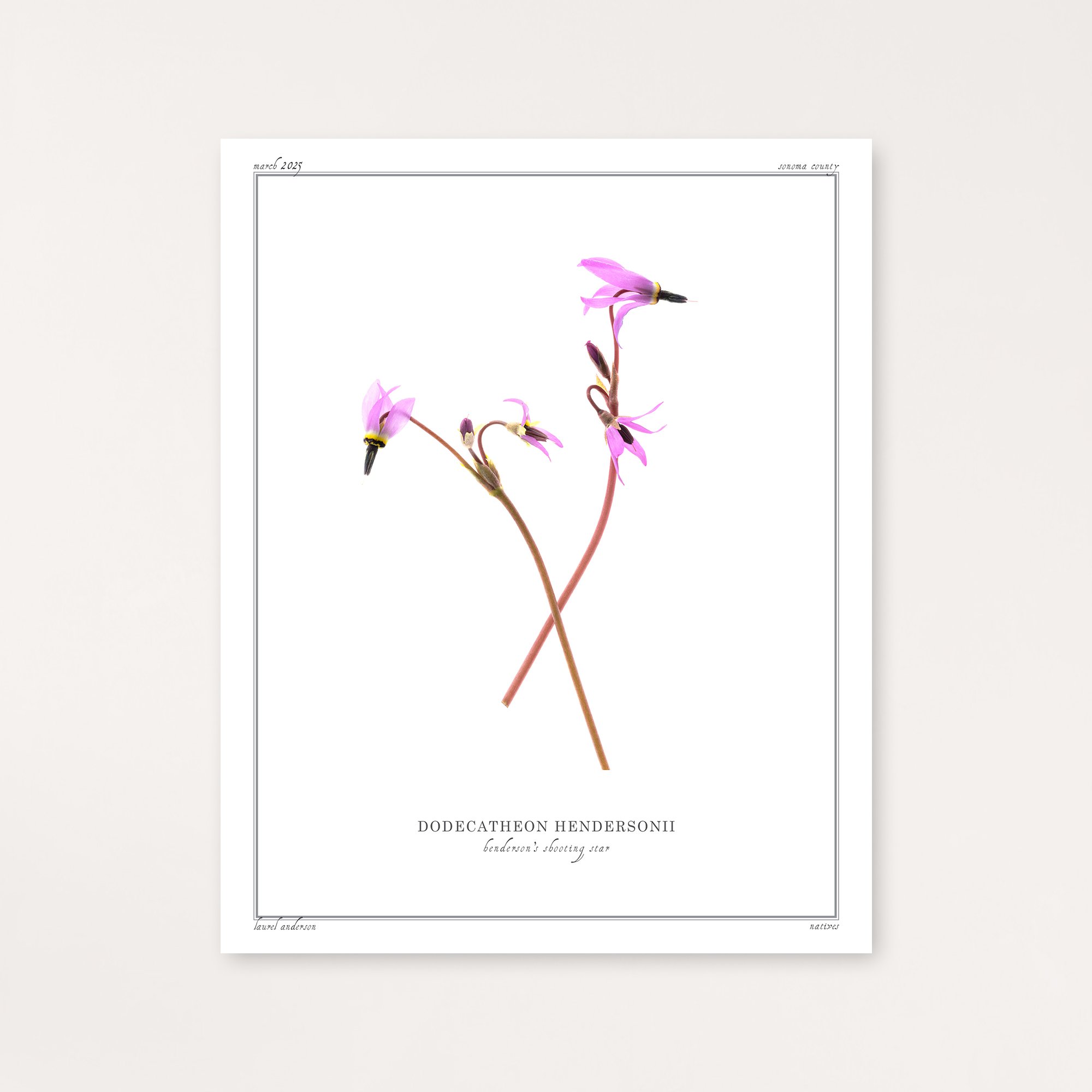 Image 1 of 2
Image 1 of 2

 Image 2 of 2
Image 2 of 2



Tidy Tips
Tidy Tips, Layia platyglossa, grows throughout California's low-elevation dry habitats from the Coast Ranges to the Central Valley, from sea level to 3,300 feet. This annual wildflower creates spectacular spring displays, blooming from March to June with distinctive yellow daisy-like flowers featuring crisp white-tipped petals.
This vital pollinator plant serves as an important nectar source for checkerspot butterflies, particularly the federally threatened Bay checkerspot, Euphydryas editha bayensis, as well as native bees and beneficial insects. The plant produces abundant seeds that provide essential food for birds and serves as a larval host for several moth species.
Indigenous peoples of California traditionally used the nutritious seeds of Tidy Tips to make pinole, a nourishing meal created by grinding the seeds into flour. This preparation provided an important source of protein and carbohydrates.
Each print is made by the artist using archival quality pigment ink on Moab's Entrada Rag Bright 300 paper.
Tidy Tips, Layia platyglossa, grows throughout California's low-elevation dry habitats from the Coast Ranges to the Central Valley, from sea level to 3,300 feet. This annual wildflower creates spectacular spring displays, blooming from March to June with distinctive yellow daisy-like flowers featuring crisp white-tipped petals.
This vital pollinator plant serves as an important nectar source for checkerspot butterflies, particularly the federally threatened Bay checkerspot, Euphydryas editha bayensis, as well as native bees and beneficial insects. The plant produces abundant seeds that provide essential food for birds and serves as a larval host for several moth species.
Indigenous peoples of California traditionally used the nutritious seeds of Tidy Tips to make pinole, a nourishing meal created by grinding the seeds into flour. This preparation provided an important source of protein and carbohydrates.
Each print is made by the artist using archival quality pigment ink on Moab's Entrada Rag Bright 300 paper.



















